GE 30T12BLM Handleiding
GE
Ketel & boiler
30T12BLM
Bekijk gratis de handleiding van GE 30T12BLM (6 pagina’s), behorend tot de categorie Ketel & boiler. Deze gids werd als nuttig beoordeeld door 31 mensen en kreeg gemiddeld 4.9 sterren uit 16 reviews. Heb je een vraag over GE 30T12BLM of wil je andere gebruikers van dit product iets vragen? Stel een vraag
Pagina 1/6

WIFI CONNECT MODE
When control is awake (set point temperature is displayed), WiFi Connect
mode can be initiated by depressing the “+” and ”-” buttons simultaneously for 3
seconds. Refer to geappliances.com/connect for WiFi Connect procedure using
applicable APP. Note that WiFi icon will start flashing when in connection mode
and will light solid, once connected. The icon will remain unlit when not connected
to WiFi, otherwise.
Temperature Sensors
Sensor Description
(wire color)
Normal
Temperature Range
Resistance
range in ohms
Resistance at
77º F
T1 Lower Tank (blue) 32º F - 180º F 33.9K - 1.09K 10K
T2 Upper Tank (red) 32º F - 180º F 33.9K - 1.09K 10K
T6* Water Outlet (red) 32º F - 180º F 32.7K - 1.17K 10K
T7* Water Inlet (blue) 32º F - 180º F 32.7K - 1.17K 10K
*If Equipped (EMV models only)
**** FOR TECHNICIAN USE ONLY****
GE Standard Electronic (GE30S**BLM, GE40S**BLM, GE50S**BLM, GE30T**BLM, GE40T**BLM, GE50T**BLM) and integrated
Electronic Mixing Valve (EMV) Water Heaters (GE30S**BMM, GE40S**BMM, GE50S**BMM)
VLJQL¿HVOLPLWHGSDUWVZDUUDQW\LQ\HDUV
IMPORTANT SAFETY NOTICE
This information is intended for use by individuals
possessing adequate background of electrical, electronic
and mechanical experience. Any attempt to repair a major
appliance may result in personal injury and property damage.
The manufacturer or seller cannot be responsible for the
interpretation of this information, nor can it assume any
liability in connection with its use. This quick reference
guide is provided for information purposes only and does not
replace, modify or change in any manner the Owner’s Manual
and Installation Instructions.
DISCONNECT POWER BEFORE SERVICING
IMPORTANT- RECONNECT ALL GROUNDING
DEVICES
All parts of this appliance capable of conducting electrical
current are grounded. If grounding wires, screws, straps,
clips, nuts or washers used to complete a path to ground are
removed for service, they must be returned to their original
condition and properly fastened.
SPECIFICATIONS
Capacity...........................................30/40/50 US gal
Tank Max Working Pressure ........................150 PSI
Water Temperature Set Point Range ..100F - 140F
Electrical ........................... 240/208VAC 60 Hz 1-PH
Circuit Breaker .............................................. 30 Amp
Upper Element Wattage ....................... 5500/4131W
Lower Element Wattage ....................... 5500/4131W
DISPLAY FAULT MODE
DISPLAY FAULT Mode can be accessed by pressing and holding the ”Enter” button
for 3 seconds. A two-tone sound will be heard, indicating the action was successful.
Critical Faults will be displayed to user without entering Fault Mode (normal
consumer operation mode). Note that control must first be awake to enter this mode,
(press any button to awake control, illuminating the 7 segment LEDs, showing set
point temperature). Control display will scroll through all active faults in Fault Mode
(both critical and non-critical Faults).
Faults can be cleared, in Fault Mode by pressing and holding the “+” and ”-” buttons
simultaneously for 3 seconds. A two-tone sound will be heard, indicating the action
was successful. Faults will return, if condition triggering faults reoccurs. Exit Display
Fault Mode by pressing “Enter” key or after 1 minute of button inactivity.
MONITOR MODE / LOAD STATUS
Monitor Mode can be accessed by pressing and holding the “+” and ”Enter” buttons
simultaneously for 5 seconds. Note that control must first be awake to enter this mode,
(press any button to awake control, illuminating the 7 segment LEDs, showing set point
temperature). A two-tone sound will be heard, indicating the action was successful. A
moment later, the control will display the Software Version. Press the “+” or “-” key to
move between, T1, T2,T6, T7, Mixing Valve Position (if equipped) Voltage, Current, WiFi
Strength, % Anode Life remaining (if equipped) and Personalities. The item ID will first
display and then the display will list values. Exit Monitor Mode by pressing the Enter key or
after 15 minutes of button inactivity.
Item ID Description
SW version Software Version: 606-128, etc.
T1 sensor Tank (Water) Lower Temperature
T2 sensor Tank (Water) Upper Temperature
T6 sensor* EMV Water Outlet Temperature
T7 sensor* EMV Water Inlet Temperature
Valve Position* Range: full cold = 25; full hot = 330
Voltage Voltage Reading (Volts)
Current Current Reading (Amps)
WiFi strength 5DQJH2ႇ ZHDN VWURQJ
Anode Life # Percent Anode Life remaining (alarm at 25%)
Personality Model personality ID (see Personality Table)
* If equipped (EMV models only)
# If equipped (sensing anode)
SERVICE MODE - ID:
When in Monitor Mode, Service Mode can be accessed by pressing and holding
the “+” and ”Enter” buttons simultaneously for 5 seconds. A two-tone sound will be
heard, indicating the action was successful. The control will display “SEr” to indicate
the control is now in SERVICE mode. Press the “+” or “-“ keys to select the desired
component to control. Hit the “Enter” key to toggle control of the selected component.
When controlling the upper or lower heating element, the display will first show “UE0”
or LE0, indicating that the UE or LE is OFF (signified as 0). The display will then show
the current draw (in Amps), followed by “A”. Pressing the “Enter” key, will turn the
respective element ON (signified as 1), displaying “UE1” or “LE1”. The display will then
show the current draw, when the element is energized. Note that only one element can
be energized at a time, so turning ON a second element will turn OFF the first element.
When controlling the mixing valve, the display will show “tSt” and will then indicate
the test position of “Hot” (indicating the normal operating position, set by the control).
Pressing the “Enter” key will then move the mixing valve to the full cold position
(displayed as “Cld”). Pressing the “Enter” key repeatable, will toggle the mixing valve
between the “Cld” and “Hot” positions. Exit Service mode by pressing “+” or “-“ keys
until “SEr” is displayed and then press “Enter” to exist Service mode, returning to
Normal Operation. Note that in Service mode the selected heating element will remain
ON for 5 min. and will then turn OFF. Upon exiting service mode or after 15min. of
inactivity, the control will revert back to normal operation mode.
Item ID Operational Procedure
Upper
Element Upper Heating Element (UE0=OFF; UE1=ON). Press “+” or “-“ key to
select component. Press “Enter” key to turn element ON (1) or OFF (0).
2QFH21WKHFXUUHQWGUDZZLOOEHVKRZQRQGLVSOD\VLJQL¿HGDV³$´IRU
Amps. The heating element will turn OFF after 5 min., or when turning LE
ON, or upon exiting Service Mode.
Lower
Element Lower Heating Element (LE0=OFF; LE1=ON). Press “+” or “-“ key to
select component. Press “Enter” key to turn element ON (1) or OFF (0).
2QFH21WKHFXUUHQWGUDZZLOOEHVKRZQRQGLVSOD\VLJQL¿HGDV³$´IRU
Amps. The heating element will turn OFF after 5 min., or when turning
UE ON, or upon exiting Service Mode.
Electronic
Mixing
Valve
EMV Test (CLd = full cold; Hot = Normal Control position). Press “+” or “-“
key to select component “tSt”. Press Enter key to toggle control between
“CLd” and “Hot” position. Mixing valve returns to normal operating state
after 5 min. or upon exiting Service Mode.
PERSONALITY MODE
When in Service Mode, Personality Set-Up Mode can be accessed by pressing and
holding the “+” and ”Enter” buttons simultaneously for 5 seconds. A two-tone sound will
be heard, indicating the action was successful. A moment later, the control will display
the Personality ID of the model (signified by PER). The Personality ID number can be
changed by selecting the “+” or “-” key (per Personality Table). Press the “Enter” key to
Select the Personality and Exit Personality Set-up mode.
Item ID Operational Procedure
Personality
ONLY requires update if e2 personality module and Control Board
is replaced. Press “+” to increase or “-” to decrease. Press “Enter”
to select change per Personality Table in the next column and Exit
Personality Set-up Mode.
31-6000228 Rev. 1 07-20
Printed in USA
GE is a trademark of the General Electric Company. Manufactured under trademark license.
:L¿,QGLFDWRU
• Solid when connected
• )ODVKLQJGXULQJFRQ¿JXUDWLRQ
set-up mode
%XWWRQV
• Increase/Decrease Temperature
or adjust vacation days
(vacation mode)
(QWHU/('
%OLQNVZKHQFRQ¿UPDWLRQUHTXLUHG
for control change. Normally
appears dark.
(QWHU%XWWRQ
“Enter” selection required for
FRQ¿UPDWLRQRIDQ\FRQWUROFKDQJH
$QRGHUHSODFHPHQW,QGLFDWRU
5HVHW
Illuminates when Anode
replacement required. Depress
once to silence alarm. Depress
and Hold to Reset button after
replacement completed.
&DSDFLW\6HOHFW%XWWRQ
,QGLFDWRU
Toggle between Normal, High, or
X-High
'LVSOD\
• Temperature setting
• # vacation days setting
(in vacation mode)
(To display setpoint if screen is
inactive, press any button)
0RGH6HOHFW%XWWRQ,QGLFDWRU
• Normal or Vacation
(Press and hold to switch
between °F and °C).
T6* EMV water
outlet sensor (hot)
T7* EMV water
inlet sensor (cold)
T2 Upper
Tank Sensor
T1 Lower
Tank Sensor
3HUVRQDOLW\ 0RGHO1XPEHU
0 No Model (F90 Fault)
1 GE30S10BLM (no Sensing Anode)
2 GE40S10BLM (no Sensing Anode)
3 GE50S10BLM (no Sensing Anode)
4 GE30T10BLM (no Sensing Anode)
5 GE40T10BLM (no Sensing Anode)
6 GE50T10BLM (no Sensing Anode)
7 GE30S12BLM (Sensing Anode)
8 GE40S12BLM (Sensing Anode)
9 GE50S12BLM (Sensing Anode)
10 GE30T12BLM (Sensing Anode)
11 GE40T12BLM (Sensing Anode)
12 GE50T12BLM (Sensing Anode)
13 GE30S10BMM (EMV, w/ Sensing Anode)
14 GE40S10BMM (EMV, w/ Sensing Anode)
15 GE50S10BMM (EMV, w/ Sensing Anode)
If equipped (model dependent)

Fault Code
Displayed
Condition Check
F10 Lower heating element failure. Control energizes lower
HOHPHQWEXWFXUUHQWVHQVRUGHWHFWVQRFXUUHQWÀRZ
Check respective heating element and wiring connections at element and control. Use
service mode to cycle element and check current draw. Control assembly may have failed
otherwise.
F11 Upper heating element failure. Control energizes Upper
HOHPHQWEXWFXUUHQWVHQVRUGHWHFWQRFXUUHQWÀRZ
F12 Lower heating element failure. Check respective heating element and replace as required. Use service mode to cycle
element and check current draw. Control assembly may have failed, otherwise.
F13 Upper heating element failure.
F16**
Mixing Valve Outlet DC TCO tripped. Outlet DC TCO reading
is low, indicating TCO tripped.
(09PRGHOV5HSODFH7&2DQGFRQ¿UPRXWOHWWHPSHUDWXUHUHPDLQVLQFRQWURODIWHU
correction. Mixing valve, sensors, or electronic control may require replacement to correct
over temperature condition.
F17 Jumper wire missing on non-EMV model. (12V not present) Non-EMV models: Ensure non-EMV model jumper is present and connected correctly. Install
Jumper wire, if missing (part of J802 connector plug).
F18**
Mixing Valve Failure. Means mixing valve is not able to control
outlet temperature and NOT due to elevated inlet temperature
or ambient. Disables mixing valve mode and controls T2 to
user setpoint until serviced (normal mode).
&\FOHPL[LQJYDOYHLQVHUYLFHPRGH,IQRPRYHPHQWFRQ¿UPZLUHFRQQHFWLRQVDWPRWRUDQG
control are correct. Replace mixing valve components if connections are correct.
F19 Runaway Heat Source (leads to a ECO trip). Idle Over-
Current (Current present when no loads are on.).
If ECO trips with F19 Fault, then defective relay on board. Replace control board and
manually reset ECO. If ECO trips with no F19 fault, then defective thermistor.
F30 T1 tank temperature sensor failure (open/short). T1 Sensor is
beyond normal 32°F - 180°F temperature range.
Check T1 sensor mounting, wiring and resistance. Use service mode to monitor T1 sensor
temperature. If T1 sensor checks OK, control assembly may have failed.
F31 T2 tank temperature sensor failure (open/short). T2 sensor is
beyond normal 32°F - 180°F temperature range.
Check T2 sensor mounting, wiring and resistance. Use service mode to monitor T2 sensor
temperature. If T2 sensor checks OK, control assembly may have failed.
F32 or
F33
T1 or T2 tank temperature sensor failure. Thermistor accuracy
issue.
Check both T1 and T2 thermistors wiring and mounting to determine cause for discrepancy.
If no assembly issue found, monitor thermistor readings in service mode (comparing to actual
water temperature) and replace inaccurate thermistor.
F38**
T6 EMV Water Outlet temperature sensor failure (open/short
or T6 sensor is beyond normal 32°F - 180°F temperature
range.
Check T6 sensor mounting, wiring and resistance. Use service mode to monitor T6 sensor
temperature.
F39** T7 EMV Water inlet temperature sensor failure (open/short or
T7 sensor is beyond normal 32°F - 180°F temperature range.
Check T7 sensor mounting, wiring and resistance. Use service mode to monitor T7 sensor
temperature.
F40
Current Sensor Failure (current sensor open/short) &KHFNZLULQJWRFRQ¿UPQRGDPDJH,IGDPDJHGUHSDLUUHSODFHVHQVRUDQGZLULQJDV
required. If no visible damage, replace control (making sure black L1 wire is threaded
through sensor).
F41*
Anode miswired conditioned or shorted to ground. Check to ensure the tank is full of water (fault may occur if tank is empty). Check anode
and anode wire connections (on the board and at the anode rod). Check if any thermistor
connections are shorted to earth ground. Check if anode is shorted to tank.
F43 Leak Detector Sensor Failure - open/short (when using leak
detection accessory module)
&KHFNZLULQJVHQVRUFRQQHFWLRQVWRFRQ¿UPQRGDPDJH,IGDPDJHGUHSDLUUHSODFHVHQVRU
module and wiring as required.
F44 Adjacent pins on micro out of range (T1 vs. T2) &RQ¿UPUHVLVWDQFHRI7DQG7WHPSHUDWXUHVHQVRUVDUHFRUUHFWDQGQRGDPDJHWRZLULQJ
Replace thermistors if out of range, otherwise replace electronic control.
F45 Adjacent pins on micro out of range (T6 vs. T7) &RQ¿UPUHVLVWDQFHRI7DQG7WHPSHUDWXUHVHQVRUVDUHFRUUHFWDQGQRGDPDJHWRZLULQJ
Replace thermistors if out of range, otherwise replace electronic control.
F60 AC Power detection failure Agency required fault. No Service action required.
F61 Tank regulation fault Agency required Fault. No Service action required.
F62 Incoming cold water too hot. Check accuracy of inlet water temperature. Unit may have supplimental water heater in
circuit (such as solar water heater).
F63 or
F64**
UL Mixing Valve failure &\FOHPL[LQJYDOYHLQVHUYLFHPRGH,IQRPRYHPHQWFRQ¿UPZLUHFRQQHFWLRQVDWPRWRUDQG
control are correct. Replace mixing valve components if connections are correct.
F70*
Anode Depleted. Anode text is illuminated, and the audible
alarm is sounding. The control has calculated that the anode
rod has been mostly consumerd or the time in operation has
exceded the replacement timeline threshold.
5HSODFHDQRGHURGZLWK*(DSSURYHG$QRGH'HSOHWLRQDQRGHURGIRUVSHFL¿FPRGHO
application. Alarm can be silenced by pressing Anode “Hold to Reset” button once. Depress
and Hold reset button for 5 seconds after anode replacement (resets anode life to 100%).
F71
Current transformer miswired. F10 and F11 fault codes have
all occurred during the same heating cycle.
Check that black L1 wire passes through the current sensor and that current sensor
connector (J301) is plugged in. If correct (and there is no damage to wiring), the control cord
needs to be replaced.
F72
Low line voltage during operation. Sagging voltage occurs
over time, not at power-up, like fault F76.
Check incoming line voltage within +10/-15% of either 208 or 240 VAC, depending upon
power supply. The detected voltage can be viewed in “Monitor Mode”. Check heating
elements are not shorted to ground.
F76
The voltage is too low at power-up. The control monitors the
input line voltage, and if the voltage is below 155V, the fault
code will be displayed.
Check electrical supply line connections. Voltage should measure within +10/-15% of either
208 or 240 VAC, depending upon power supply, The detected Voltage reading can be viewed
in “Monitor Mode”. Check heating elements are not shorted to ground.
F77
Stuck Key fault. This indicates there is a button on the front
panel that is stuck down (longer than 30 seconds). This button
is inoperable. Other buttons work normally. If the button
becomes free, the fault code will clear by itself.
Check to see if all buttons are operable. Ensure control board is properly seated and
mounting screws are not overtightened (loosen screws and hand tighten lightly). Replace
control board, if issue persists.
F78 Water Leak Detected (when using leak detection accessory
module).
&RQ¿UPSUHVHQFHRULJLQRIZDWHUOHDNDQGUHSDLUDVUHTXLUHG
F90
E2 personality module is unplugged. Unit will continue to
operate using previously stored personality on Control Board.
&RQ¿UPPRGHOQXPEHUSHUVRQDOLW\LVFRUUHFW5HLQVHUW(SURPPRGXOH-LQWRFRQWURO
board or replace if damaged. Personality can be entered in “Personality Mode”, if PCB
information is not correct.
F91 New E2 plug detected (0 personality value). Cycle Power. E2 module will be programmed with stored information from control board.
F92 3HUVRQDOLW\0LVPDWFK3&%ÀDVKLQIRUPDWLRQDQG(PRGXOH
are not the same).
No service action required. Control will update based on E2 module information.
F93 1RSHUVRQDOLW\LGHQWL¿HG&RQWURO%RDUGDQG(PRGXOHOLNHO\
replaced and neither have an assigned Personality).
Assign correct Personality within Personality Mode (see Personality Table for correct ID).
F94
WiFi Daughter Board Failure &RQ¿UP:L)LLVDYDLODEOHDQGDWWHPSWWRUHHVWDEOLVKFRQQHFWLRQWKURXJK$33VHH
GEAppliances.com/connect). Check terminal connection J602 to WiFi board. Replace WiFi
ERDUGLIQRRWKHULVVXHIRXQGDQGFRQQHFWWR:L¿SHU$SSLQVWUXFWLRQV
* Applicable to models with sensing Anode
**Applicable to models with integrated Electronic Mixing Valve (EMV)
31-6000228 Rev. 1 07-20
Mixing Valve
Thermostat
Cut Out (155F)
One Shot Cold Water
ÀH[KRVH
EMV stepper
motor &
drive asm
Anode rod
access
EMV Front
/ Rear
Shrouds
ECO HI
LIMIT(180F)
Resettable
1
2
3
4
1
11
L1 L2
UPPER ELEMENT
LOWER ELEMENT
5500W 10.5 ё~22.9 A
5500W 10.5 ё~22.9 A
M403
M401
•
NO •
COM M402 •
NO •
COM
•NC
K402
BLACK
RED
BLACK
BLUE
RED
BLUE
K401
• •
•
•
•
•
•
•
•
•
•
•
•
•
•
T7
T6
MIXING
VALVE
ϯϱɏ
TCO
AQUA
AQUA
RED
RED
BLUE
BLUE
RED
RED
ORANGE
AQUA
BROWN
YELLOW
RED
BLACK
BLACK
BLACK
BLACK
e2 Personality
module
J802
1
11
•
•
•
•
•
•
•
•
•
•
•
J802
J808
YELLOWLine 1
Line 1 PURPLE
J801
•
•
•
•
•
•
T1
T2
Sensor Output
Sensor Output
5VDC
5VDC
Sensor Output
Sensor Output
5VDC
5VDC
5VDC
12.5VDC Pulsing
12.5VDC Pulsing
12.5VDC Pulsing
12.5VDC Pulsing
12.5VDC Constant
TCO Status
6
1
••
ANODE
J807
•
GND
GREEN
RED
• •
J301
WHITE
BLACK SENSOR
CURRENT
• •
J602
RED
WHITE WIFI
MODULE
• •
NAVY
BLUE
1
4
1
2
2
1
MAIN BOARD
J403
Non-EMV models: Use
J802 Jumper plug
Line 2
Line 2
(if equipped)
(if equipped)

MODE DE CONNEXION Wi-Fi
Lorsque le contrôle est activé (température de réglage affichée), on peut démarrer
le mode Connexion Wi-Fi en pressant les boutons « + » et « - » simultanément
durant 3 secondes. Reportez-vous à www.geappliances.com/connect pour la
procédure de connexion Wi-Fi à l’aide de l’application APP. Notez que l’icône Wi-Fi
se mettra à clignoter en mode connexion et restera allumée une fois la connexion
établie. Autrement, l’icône restera éteinte en l’absence d’une connexion Wi-Fi.
Capteurs de température
Capteur 'HVFULSWLRQFRXOHXUGX¿O Plage des tempéra-
tures normale
Plage des résis-
tances (ohms)
Résistance à
77 ºF
T1 Réservoir inférieur (bleu) 32º F - 180º F 33.9K - 1.09K 10K
T2 Réservoir supérieur (rouge) 32º F - 180º F 33.9K - 1.09K 10K
T6* Sortie d’eau (rouge) 32º F - 180º F 32.7K - 1.17K 10K
T7* Entrée d’eau (bleu) 32º F - 180º F 32.7K - 1.17K 10K
*Si équipé (modèles EMV seulement).
****Réservé aux techniciens****
GE Standard électronique (GE30S ** BLM, GE40S ** BLM, GE50S ** BLM, GE30T ** BLM, GE40T ** BLM, GE50T ** BLM) et
FKDXႇHHDXLQWpJUpVDXPLWLJHXUpOHFWURQLTXH(09*(6%00*(6%00*(6%00
VLJQL¿HXQHJDUDQWLHOLPLWpHGHVSLqFHVHQDQQpHV
AVIS DE SÉCURITÉ IMPORTANT
Cette information est destinée aux personnes qui possèdent une
compétence adéquate en électricité, électronique et mécanique.
Toute tentative de réparer un gros appareil peut causer des
blessures corporelles et des dommages aux biens. Le fabricant ou
le vendeur ne peuvent être tenus responsables de l’interprétation ou
de l’utilisation de cette information. Ce guide de référence condensé
n’est fourni qu’à titre informatif seulement et il ne remplace ni ne
modifie d’aucune manière le manuel d’utilisation et les instructions
d’installation.
DÉBRANCHEZ L’ALIMENTATION ÉLECTRIQUE
AVANT LA RÉPARATION
IMPORTANT - REBRANCHEZ TOUS LES
DISPOSITIFS DE MISE À LA TERRE
Toutes les pièces de cet appareil susceptibles de conduire le
courant électrique sont mises à la terre. Si des fils, vis, brides,
agrafes, écrous ou rondelles utilisés pour un trajet de terre sont
retirés dans le cadre d’une réparation, ils doivent être remis à leur
condition initiale et fixés correctement.
SPÉCIFICATIONS
Capacité.........................................30/40/50 US gal
Pression de service max. du réservoir......150 PSI
Plage des réglage de
température de l’eau…...............100 °F – 140 °FF
Alimentation électrique...240/208VAC 60 Hz 1-PH
Disjoncteur...........................................30 Ampères
Tension de l’élément supérieur..........5500/4131W
Tension de l’élément inférieur............5500/4131W
31-6000228 Rev. 1 07-20
Imprimé aux États-Unis
GE est une marque de commerce de General Electric Company. Fabriqué sous licence de marque.
Capteur de sortie d’eau
EMV T6* (chaud)
Capteur de sortie
d’eau EMV T7* (froid)
Capteur de réser-
voir supérieur T2
Capteur de
réservoir
inférieur T1
Personnalité Numéro de modèle
0 Pas de modèle (anomalie F90)
1 GE30S10BLM (pas d’anode détectrice)
2 GE40S10BLM (pas d’anode détectrice)
3 GE50S10BLM (pas d’anode détectrice)
4 GE30T10BLM (pas d’anode détectrice)
5 GE40T10BLM (pas d’anode détectrice)
6 GE50T10BLM (pas d’anode détectrice)
7 GE30S12BLM (anode détectrice)
8 GE40S12BLM (anode détectrice)
9 GE50S12BLM (anode détectrice)
10 GE30T12BLM (anode détectrice)
11 GE40T12BLM (anode détectrice)
12 GE50T12BLM (anode détectrice)
13 GE30S10BMM (EMV, anode détectrice)
14 GE40S10BMM (EMV, anode détectrice)
15 GE50S10BMM (EMV, anode détectrice)
Voyant Wi-Fi
• Allumé lorsque connecté
&OLJQRWHGXUDQWOHPRGHGHFRQ¿-
guration
Boutons +/-
• Augmente/Diminue la
température ou règle le nombre
de jours (mode Vacances).
DEL Entrer
&OLJQRWHORUVTX¶XQHFRQ¿UPDWLRQ
HVWUHTXLVHSRXUXQHPRGL¿FDWLRQ
de commande. Apparaît sombre
normalement.
Bouton Entrer
La sélection de « Entrer » est
UHTXLVHSRXUFRQ¿UPHUWRXWH
PRGL¿FDWLRQGHFRPPDQGH
Voyant de remplacement
d’anode et réinitialisation
S’allume lorsqu’il faut remplacer
l’anode. Pressez une fois pour
éteindre l’alarme. Maintenez
une pression sur le bouton
Reset (réinitialisation) une fois le
remplacement terminé.
Bouton et voyant de sélection
de la capacité
Bascule entre Normal, High
(haut) ou X-High (très haut)
$ႈFKHXU
• Réglage de température
• Réglage du nombre de jours (en
mode Vacances)
3RXUDႈFKHUOHUpJODJHVLO¶pFUDQ
est inactif, pressez n’importe quel
bouton)
Bouton et voyant du mode Sé-
lection
• Normal ou Vacances (Maintenir
une pression pour basculer entre
°F et °C).
Si le modèle en est équipé.
MODE D’AFFICHAGE D’ANOMALIE
On peut accéder au mode Affichage d’anomalie (DISPLAY FAULT) en maintenant une
pression sur le bouton « Enter » durant 3 secondes. Une sonnerie à deux tons se fera
entendre pour indiquer que l’action a réussi. Les anomalies critiques s’afficheront à
l’utilisateur sans nécessité d’entrer en mode Anomalie (mode de fonctionnement normal du
consommateur). Notez que le contrôle doit d’abord être activé avant d’entrer dans ce mode
(pressez n’importe quel bouton pour activer le contrôle, allumer les 7 DEL des segments et
afficher la température de réglage). L’afficheur va faire défiler les anomalies actives dans le
mode Anomalie (les anomalies critiques et non critiques).
On peut effacer les anomalies dans le mode Anomalie en maintenant une pression
sur les boutons « + » et « - » simultanément durant 3 secondes. Une sonnerie à deux
tons se fera entendre pour indiquer que l’action a réussi. Les anomalies s’afficheront
de nouveau si les conditions qui les déclenchent réapparaissent. Quittez le mode
d’affichage d’anomalie en pressant « Enter » ou après 1 minute d’inactivité des boutons.
MODE DE SURVEILLANCE / ÉTAT DE CHARGEMENT
On peut accéder au mode Surveillance (Monitor Mode) en maintenant une pression sur les
boutons « + » et « - » simultanément durant 5 secondes. Notez que le contrôle doit d’abord
être activé avant d’entrer dans ce mode (pressez n’importe quel bouton pour activer le
contrôle, allumer les 7 DEL des segments et afficher la température de réglage). Une sonnerie
à deux tons se fera entendre pour indiquer que l’action a réussi. Peu de temps après, le
contrôle affichera la version du logiciel. Pressez la touche « + » ou « - » pour défiler entre les
options T1, T2, T6, T7, Mixing Valve Position (position robinets mélangeurs, si équipé), Voltage
(tension), Current (courant), WiFiStrength (puissance Wi-Fi), % Anode Life remaining (% durée
de vie restante de l’anode, si équipé) et Personalities (personnalités). L’identifiant de l’article
s’affichera en premier suivie de la liste des valeurs. Quittez le mode Surveillance en pressant
la touche Enter ou après 15 minutes d’inactivité des boutons.
Article Ident. Description
Version log. Version logicielle : 601-9918, etc.
Capteur T1 Plus basse temp. réservoir (eau)
Capteur T2 Plus haute temp. réservoir (eau)
Capteur T6* Temp. sortieeau EMV
Capteur T7* Temp. entréeeau EMV
Position robinet* Plage : compl. froid = 25; compl. chaud = 330
Tension Lecture tension (volts)
Courant Lecture courant (ampères)
Puiss. Wi-Fi Plage : Arrêt = 0; 1 = faible, 10 = fort
Durée anode# Pourcent. durée anode restante (alarme à
25%)
Personnalité Id. modèle personnalité (voir tabl. personnalité)
* Si équipé (Modèle EMV seulement)
# Si équipé (anode détectrice)
MODE SERVICE - ID:
En mode Surveillance, on peut accéder au mode Service en maintenant une pression sur les
boutons « + » et « Enter » simultanément durant 5 secondes. Une sonnerie à deux tons se
fera entendre pour indiquer que l’action a réussi. Le contrôle affichera « Ser » pour indiquer
qu’il est maintenant en mode SERVICE. Pressez les touches « + » ou « - » pour sélectionner
le composant à contrôler. Pressez la touche « Enter » pour basculer le contrôle du composant
choisi. Lors du contrôle de l’élément chauffant supérieur ou inférieur, l’afficheur indiquera
d’abord « UE0 » ou « LE0 » pour signaler que UE ou LE est éteint (OFF, signifié par 0).
L’afficheur indiquera ensuite l’appel de courant (en ampères), suivi de « A ». Une pression sur
« Enter » allumera (ON, signifié par 1) l’élément respectif, et sera affiché « UE1 » ou « LE1 ».
L’appel de courant s’affichera alors une fois l’élément alimenté. Notez qu’un seul élément peut
être alimenté à la fois, donc allumer un second élément éteindra le premier. Lors du contrôle
du robinet mélangeur, l’afficheur affichera « tSt » puis la position de test « Hot » (c.-à-d. la
position de fonctionnement normal, réglée par le contrôle). Une pression sur « Enter » va
alors placer le robinet mélangeur à la pleine position « Cold » (signalée par « Cld »). Des
pressions répétées sur « Enter » fait basculer le robinet mélangeur entre les positions « Cld
» et « Hot ». Quittez le mode Service en pressant « + » ou « - » jusqu’à afficher « Ser » puis
pressez « Enter » pour quitter le mode Service et retourner en fonctionnement normal. Notez
qu’en mode Service, l’élément chauffant sélectionné demeurera allumé (ON) durant 5 minutes
puis s’éteindra. En quittant le mode Service ou après 15 minutes d’inactivité, le contrôle
retourne au mode de fonctionnement normal.
Article Ident. Procédure opérationnelle
Élément
supérieur eOpPHQWFKDXႇDQWVXSpULHXU8( 2))8( 213UHVVH]©ªRX©
» pour sélectionner le composant. Pressez « Enter » pour allumer (ON, 1)
ou éteindre (OFF, 0) l’élément. Une fois allumé, l’appel de courant est af-
¿FKp©$ªSRXUDPSqUHV/¶pOpPHQWFKDXႇDQWV¶pWHLQGUD2))DSUqV
minutes, ou lorsque LE est allumé (ON), ou si l’on quitte le mode Service.
Élément
inférieur eOpPHQWFKDXႇDQWLQIpULHXU/( 2))/( 213UHVVH]©ªRX©ª
pour sélectionner le composant. Pressez « Enter » pour allumer (ON, 1)
ou éteindre (OFF, 0) l’élément. Une fois allumé, l’appel de courant est af-
¿FKp©$ªSRXUDPSqUHV/¶pOpPHQWFKDXႇDQWV¶pWHLQGUD2))DSUqV
minutes, ou lorsque UE est allumé (ON), ou si l’on quitte le mode Service.
Robinet
mélangeur
électro-
nique
(EMV)
Test EMV (CLd = complètement froid; Hot = position de contrôle normal).
Pressez « + » ou « - » pour sélectionner le composant « tSt ». Pressez
« Enter » pour basculer entre « CLd » et « Hot ». Le robinet mélangeur
retourne à l’état de fonctionnement normal après 5 minutes ou en quittant
le mode Service.
MODE PERSONNALITÉ
En mode Service, on peut accéder au mode Personnalité en maintenant une pression sur les
boutons « + » et « Enter » simultanément durant 5 secondes. Une sonnerie à deux tons se
fera entendre pour indiquer que l’action a réussi. Un moment plus tard, le contrôle affichera
l’identifiant Personnalité du modèle (signifié par PER). On peut changer l’identifiant Personnalité
en sélectionnant la touche « + » ou « - » (selon le tableau Personnalité). Pressez la touche
Enter pour sélectionner la personnalité et quitter le mode Personnalité. Pressez « Enter » pour
sélectionner la Personnalité et quitter le mode Personnalité.
Article Ident. Procédure opérationnelle
Personnalité
Nécessite SEULEMENT une mise à jour si le module Personnalité
e2 et la carte de commande sont remplacés. Pressez « + » pour
augmenter ou « - » pour diminuer. Pressez Enter pour choisir la
PRGL¿FDWLRQVHORQOHWDEOHDX3HUVRQQDOLWpGDQVODFRORQQHVXLYDQWHHW
quitter le mode Personnalité.
Product specificaties
| Merk: | GE |
| Categorie: | Ketel & boiler |
| Model: | 30T12BLM |
Heb je hulp nodig?
Als je hulp nodig hebt met GE 30T12BLM stel dan hieronder een vraag en andere gebruikers zullen je antwoorden
Handleiding Ketel & boiler GE
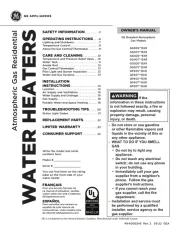
7 December 2024

21 Juni 2023

18 Juni 2023

16 Juni 2023

10 Juni 2023

4 Juni 2023

1 Juni 2023

30 Mei 2023

28 Mei 2023

21 Mei 2023
Handleiding Ketel & boiler
- Apricus
- Rommelsbacher
- Envirosun
- Vox
- Sentry
- Arcelik
- Hisense
- Daalderop
- Fagor
- Buderus
- LERAN
- Aspes
- Ygnis
- Elba
- Jocel
Nieuwste handleidingen voor Ketel & boiler
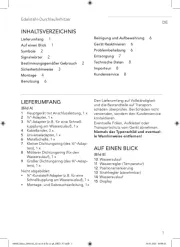
29 Augustus 2025
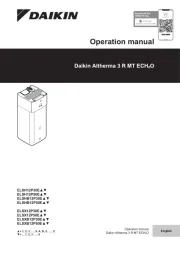
26 Augustus 2025
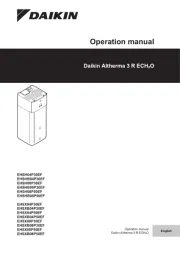
26 Augustus 2025
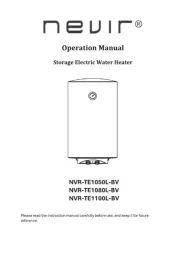
26 Augustus 2025
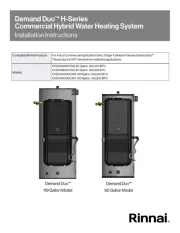
26 Augustus 2025
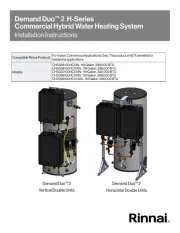
25 Augustus 2025
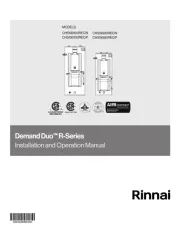
25 Augustus 2025
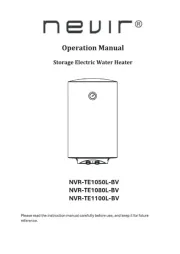
25 Augustus 2025
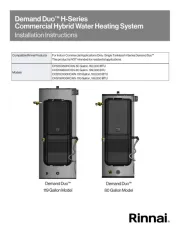
25 Augustus 2025
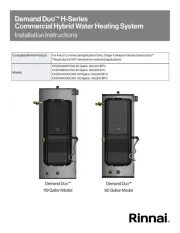
25 Augustus 2025